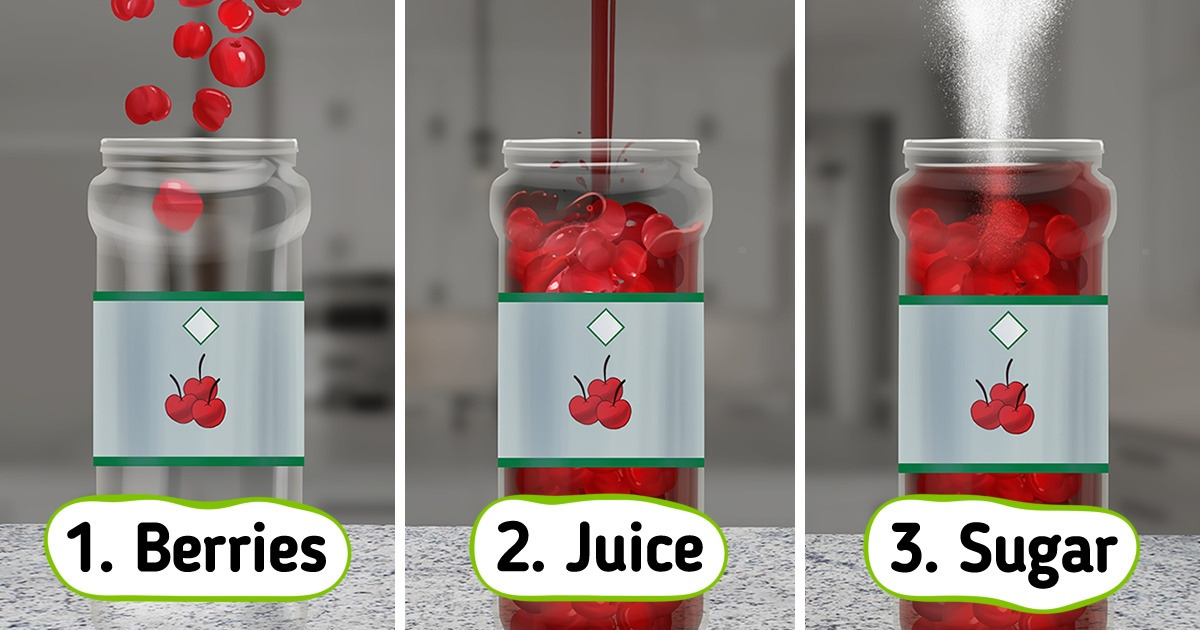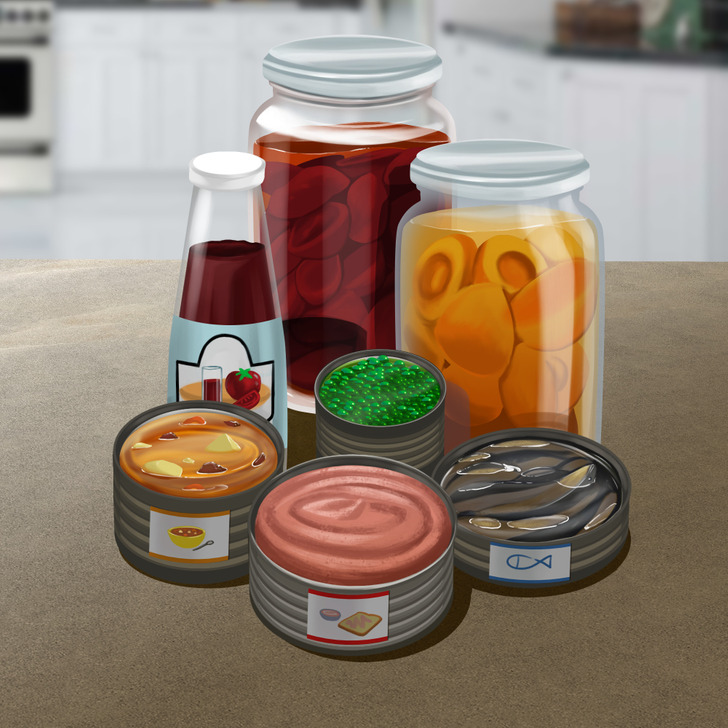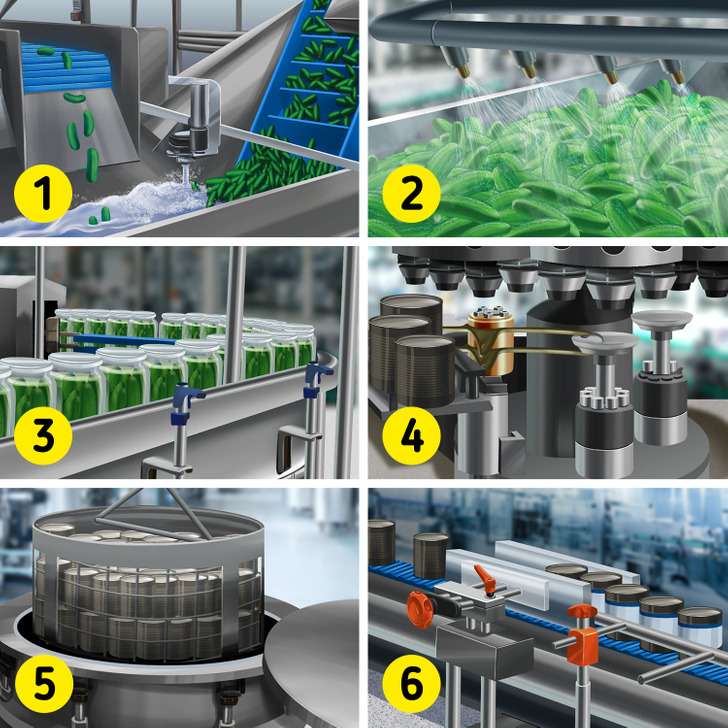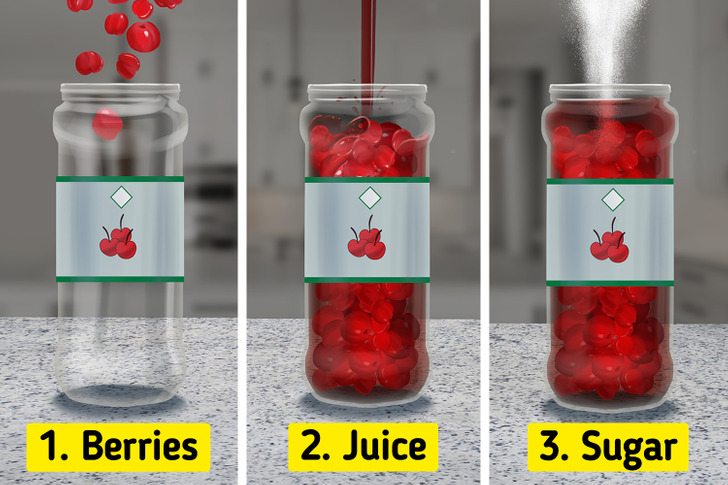A Guide to How Canned Foods Are Produced

A lot of people think that canned foods contain preservatives because they can be stored for years.
5-Minute Crafts is going to explore how canned foods are made and if they contain preservatives.
What canning is

Canning is a method of preserving foods from spoiling by keeping them in a sealed container. The method is sealing the food inside a jar or a bottle, heating it to a high temperature, sustaining the heat for a certain time, and then keeping the jar closed until the food is eaten.
The point of canning is to destroy the microorganisms in the food and not allow new ones to appear inside. The food is sealed in a jar and heated to a temperature that destroys all organisms and spores that might grow in a jar. The food will be edible until it’s stored in a closed jar because microorganisms can’t get in.
Vegetables, fruits, fish, meat, dairy products, and soft drinks are canned. The method allows us to retain most of the nutrients. So, protein, fats, carbs, vitamins A, C, D, and B2 are fully stored, and the preservation of vitamin B1 depends on how long the heat treatment was applied. Also, some vitamins and microelements might dissolve in the brine or syrup. These liquids can be eaten together with the foods to get the nutrients.
How cans are made

Canning usually includes 6 stages.
- Preparation. The foods are sorted, washed under a strong stream of water, cleaned, and cut if needed.
- Blanching. Almost all vegetables and some fruit are soaked in hot water and treated with steam. It helps soften the food and makes it easier to fit into the cans. Also, blanching inactivates the ferments that might cause unwanted changes before canning.
- Filling the container. The containers are filled with the food and, if needed, with liquid — syrup, sauce, or brine. It helps fill as much space and improve the taste qualities of the product.
- Sealing. Usually, bottles, jars, and other containers are sealed in a vacuum to make sure there’s no air inside.
- Heat treatment. After sealing, the container is sterilized: heated to a high temperature that is maintained for a certain time to destroy bacteria, yeast, and mold that might be in the food. The heating is done in cookers and high-pressure kettles at 240° F.
- Labeling. After sterilization, the containers are cooled in cold water or air, labeled and sent to storage.
Preservatives in cans

Most cans don’t contain any preservatives. The canning process itself is so effective that there’s simply no point in adding artificial preservatives.
However, some manufacturers want to prolong the shelf life of cans by adding natural or artificial preservatives. The former is salt and sugar that don’t only prolong the life of food but also improve the taste. The latter are potassium sulfate, sulfur dioxide, potassium bisulfite, potassium metabisulfite, or sodium sulfite. To avoid purchasing such products, just read the ingredients. Ideally, a can should only contain:
- the food itself
- syrup, juice, sauce, or brine
- salt or sugar as a natural preservative